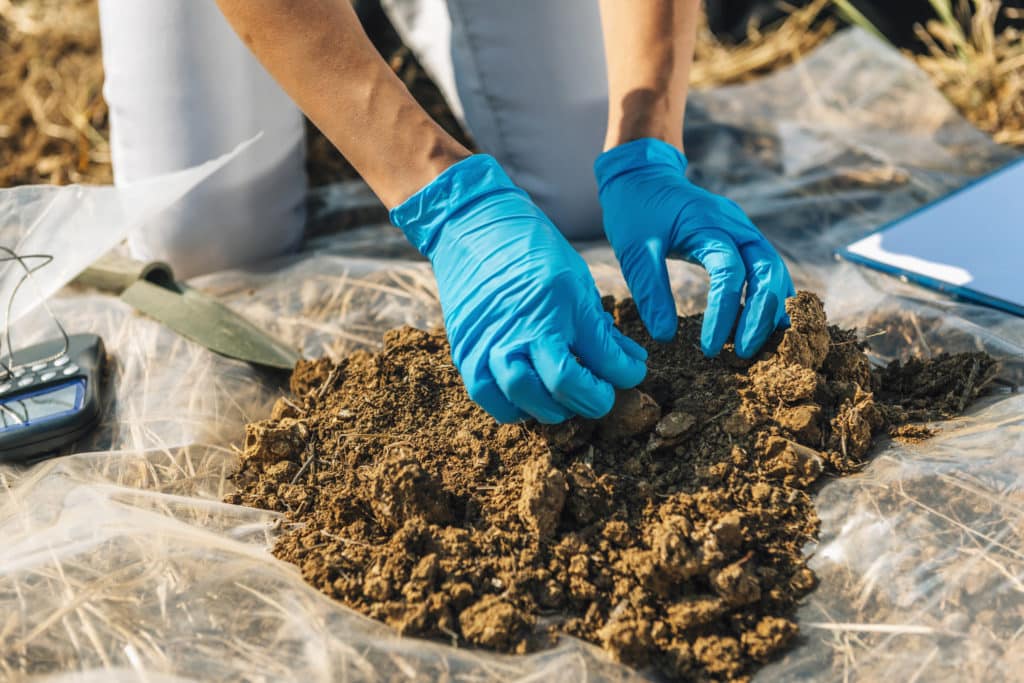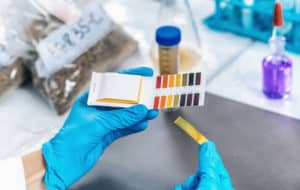The Importance of Soil Testing

Whether you are having issues with your garden, looking to add onto your home, or building a new home altogether, a soil test is something you should have done.
After all, a house is only as good as the foundation it’s built upon. You want to make sure that the soil surrounding your new space, home, or garden won’t be harmful to your health. The best way to do that is to have it professionally tested.
Most people overlook this step if their building site isn’t near a landfill or a toxic waste dump, but the truth is that toxins and pesticides can be almost anywhere. You should always err on the side of caution when it comes to your health.
What is the Purpose of a Soil Test?
At its core, a soil test is designed to determine the overall health of the soil. The test will look for a range of harmful contaminants and toxins, both natural and manmade. It will also determine the pH level of the soil and help identify areas of improvement or potential health hazards.
Soil Testing for Contaminants
The first major component that a test will uncover is the breakdown of toxins and contaminants in the soil. While some of these are natural elements, they can still be dangerous in excessive amounts. Here are some of the things that a soil test might look for:
- Phosphorus
- Calcium
- Sulfur
- Magnesium
- Nitrogen
- Copper
- Iron
- Chloride
- Lead
- Arsenic
By collecting the levels of these macro and micronutrients, we can understand the overall health of the soil. Contaminated soil will typically have an excess of macronutrients like nitrogen or phosphorous. These contaminants can either be liquid or solid and will bond to soil particles, causing a lasting effect.
If your soil is polluted, it will be difficult for plants to grow. It may also pose a threat to the health of children and pets who are likelier to touch or ingest soil. Gardeners are also at risk for exposure to these toxins.
Polluted soil can be the result of many things. From tainted water sources to industrial waste runoff, the effects of contaminants can be devastating to the health of plants, animals, and humans alike. A soil test looks for imbalances than could spell out these larger issues.
Soil Testing for pH Levels
The second component that a test will uncover is the pH level of the soil. In simple terms, soil pH refers to the alkalinity and acidity of the soil. It is measured on a scale of 0 to 14, with 7 being the neutral point. A low pH level means the soil is acidic. A high pH level means the soil is alkaline.
There are problems on both ends of the spectrum, although most soil tends to have a pH level below 7, meaning it is more acidic than alkaline.
Soil that is alkaline is often referred to as “sweet soil” and is more common in dry areas like the desert. The alkalinity makes it more difficult for plants to grow.
Acidic soil is more common where there is consistent rainfall. It is less devastating to plant life, but high acidity can also cause problems. Many areas of Hawaii have difficulty growing crops due to the high acidity of the soil. The ideal range for plant life to thrive is somewhere between a pH level of 6 and 7.5 on the scale.
Aside from the results of the soil test, it can sometimes take several years to restore pH levels to their optimal range. Because soil is impacted by lots of factors including organic matter, insect and bug habitation, and manmade pesticides and chemicals, the chemistry is always changing.
What Causes Soil Contamination?
While there are many natural factors that can impact soil chemistry, most issues come from manmade contaminants. Soil naturally contains toxins like arsenic and nitrogen which only become harmful in excessive amounts.
Pollutants like herbicides and pesticides are designed to control pest issues in the soil, protecting crops from harmful destruction. Unfortunately, this does not translate well when these products make it into residential areas. They are not designed to protect humans and they ultimately can cause harm. When farmlands are consistently sprayed with pesticides, it causes a buildup of toxic residues in surrounding ground water. This can ultimately impact soil health.
The occurrence of oil or gas leaks can also create soil problems by infecting groundwater and spreading it to nearby areas. Old homes also see contamination from lead deposits in the soil, given that lead was once considered harmless.
When Should I Get a Soil Test?
Soil testing is something that can be done year-round and is beneficial to do every so often. If you are moving near farmland or former military bases, the soil could be contaminated and should be checked. These areas are at high risk for exposure to harmful chemicals and pollutants.
A soil test is oftentimes overlooked when people are starting to build a new home, but it is important to understand what you’re building on. You won’t be able to know the contents of your soil unless you have it tested. This is definitely something that should be considered if you have pets or small children, or if you like to garden regularly.
For new builds, soil testing may happen after contractors have dug for a foundation. If you are particularly concerned about soil contamination, however, you can negotiate a land purchase offer that is contingent on the results of a soil test. Overall, it makes more sense to perform a soil test before any construction has occurred, as this can result in expensive changes to the building plan.
Professional Soil Testing
If you’ve decided you would like to perform a soil test, the most beneficial way to do so is to hire a soil engineer or home inspector. These are people who are licensed to analyze soil components and recommend any further action. Again, this should be a major consideration for anyone with pets, gardens, or small children.
The soil testing process is simple enough when done by a professional. Your inspector will come to the home or land being tested. They will drill small holes in the soil and pull up samples to take for analysis.
One thing you want to make sure is that they collect multiple samples. Just one sample will not be a good indicator of the overall soil health. Make sure to ask your inspector how many samples he/she will be taking for analysis.
At MD Mold Testing, we have more than 25 years of professional inspection experience. We perform soil tests in the region covering Maryland, Washington DC, Delaware, and northern Virginia. Please contact us today to schedule a professional soil test.







